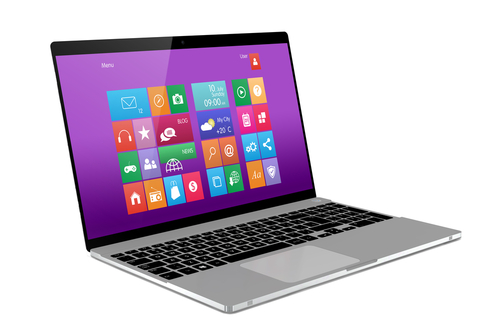

Administrator Tools To Improve Windows 8
Microsoft’s latest operating system, Windows 8, has some great features, but there’s room for improvement. As Preston Gralla of Computer World writes, Windows offers some built-in tools for boosting performance if you know where to look. The first step is to unhide them.
To do so, press the Windows key and ‘I’ to bring up the settings. Click on “Tiles” and change “Show Administrator Tools” to ‘Yes’. This gives you access to some of Windows more complex, powerful performance tools, but also opens the door to disrupting your system. If you’re a novice user, it’s probably best to leave this to a professional. Even if you are more advanced, it’s a good idea to go back and hide Administrator Tools after finishing the work outlined here.
- Resource Monitor
This tool has been available since Windows Vista and lets users see what applications are using the most resources. By typing “resmon” at the Start screen, the Resource Monitor icon will appear. Once opened, you’ll see a list of all of the apps and services currently running and a graph of your computer’s used resources. With this information, you can make informed decisions about which applications can be closed to improve performance. You may also decide that a replacement is needed for a particularly taxing program.
- Reliability Monitor
Also available since Vista, the Reliability Monitor is for tracking system stability and monitoring crashes. Access it by typing “reliability” at the Start screen, then click ‘Settings’, then ‘View Reliability History’. You’ll see a graph of your system’s stability with a rating between 1 and 10. Each time there’s a application or system failure, the rating drops. Every day there’s no crashes, the rating improves. In addition to this simple rating system, you’ll be given a list of all of the failures your system has experienced. You’ll be able to read details of each. By studying this report, you’ll be able to see where fixes and changes are needed.
- Start-Up
For many users, their system starts slowly because they’re asking too many programs to load automatically on start-up. To thin this list, use the Task Manager. There are many ways to access it in Windows 8, but perhaps the easiest is the classic ‘control-alt-delete’. Click the start-up tab once in Task Manager, which you may need to click “More details” to see. This tab shows you what programs are asked to launch upon start-up. You’ll also see an impact rating, which judges how much each application slows start-up time and how much disk space it takes to load. Use this information to only load programs you constantly use and don’t greatly impact start time.
Even though it should be enabled by default, it’s also a good idea to check that you’re using Fast Startup. Rather than closing all sessions when you shut down your computer, Fast Startup saves your Windows kernel session to disk, which is called hibernating. This session is loaded when you start-up again to cut the time it takes to restart. To check if you’re using Fast Startup, type “Power” at the Start screen, then click ‘Settings’ and ‘Power Options’. From there, click ‘Choose what power buttons do’ and the Fast Startup option will be under ‘Shutdown Settings’.
The Task Manager itself is also a powerful tool in Windows 8. It contains tabs to track each user, the performance of your CPU, Memory, Wi-Fi and more and to track the history and usage of applications. Again, using these tools incorrectly can have a negative impact on your system so be careful what you click.
For help getting the most out of your computer, or to fix a device that isn’t working correctly, call Geek Rescue at 918-369-4335.
November 13th, 2013








